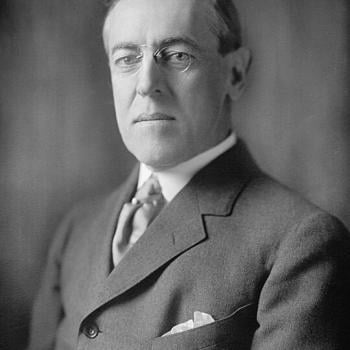 One of the most important developments in the last decade in studies of the Gospel of John has been the recognition of the crucial importance of the temple in John's theology. This is reflected in a number of important new books and articles that have appeared with the theme of Jesus and the temple and "temple Christology, " some of which are listed in the bibliography at the end of this column. This parallels the broader rise of what could be called temple studies or temple theology in biblical studies in general: the recognition of the central importance of the Israelite temple—its rites, mythos and theology—in both Hebrew Bible and New Testament. John's Gospel could well be called a Temple Text, and one of my aims in my explorations of John will be to elucidate the centrality of the Temple in the teachings and activities of Jesus. This centrality is initially reflected by the fact that Jesus begins his public ministry with his purification of the Temple.
One of the most important developments in the last decade in studies of the Gospel of John has been the recognition of the crucial importance of the temple in John's theology. This is reflected in a number of important new books and articles that have appeared with the theme of Jesus and the temple and "temple Christology, " some of which are listed in the bibliography at the end of this column. This parallels the broader rise of what could be called temple studies or temple theology in biblical studies in general: the recognition of the central importance of the Israelite temple—its rites, mythos and theology—in both Hebrew Bible and New Testament. John's Gospel could well be called a Temple Text, and one of my aims in my explorations of John will be to elucidate the centrality of the Temple in the teachings and activities of Jesus. This centrality is initially reflected by the fact that Jesus begins his public ministry with his purification of the Temple.
Chronological Issue
Both the Synoptic Gospels and John contain accounts of Jesus' purification of the temple (Jn. 2:13-2:25; Mt. 21:12-16; Mk. 11:15-19; Lk. 19:45-48). Whereas John places this event at the very beginning of Jesus' public ministry, the Synoptic writers place it at the end, as the proximate cause for the arrest and execution of Jesus. There are a number of other chronological discrepancies between John and the Synoptics, most importantly that John has Jesus' ministry extend over three different years—measured by temple festivals—whereas Jesus' ministry seems to last only a single year in the Synoptics. This, of course, has caused no end of consternation among Bible scholars. Some maintain that there were two purifications, others that there was only one, and still others that the entire affair is fictitious. This is one of numerous irresolvable questions in New Testament studies, which is why scholars like to argue about it so much.
My personal view, which is just my opinion, is that there was one purification of the temple, and it occurred at the end of Jesus' life, culminating in his execution. Why, then, does John place this event at the beginning of Jesus' ministry? First we must bear in mind that it is only an assumption that John is presenting the incidents of Jesus' life in chronological order. In fact, John's Gospel may be a collection of stories and teachings arranged thematically rather than chronologically. Because the story of the purification of the temple is placed at the beginning of John's gospel does not necessarily mean that John was trying to say that the event occurred at the beginning of Jesus' ministry. In fact, the story simply begins: "The Passover of the Jews was near, and Jesus went up to Jerusalem." It does not explicitly link the story to any preceding or subsequent event. It is a modern assumption that we should read the Gospel of John chronologically rather than thematically that creates the potential discrepancy.
In my view we need to think of John's Gospel more like a Platonic dialogue than a modern biography or a history. John has selected and ordered his information about Jesus in such a way as to elucidate his major theological themes: that Jesus is the Messiah, and as such, is Lord of the Temple. Of course some will object that this makes John's gospel fiction, but I see it as a dramatic presentation—rather than a chronological narrative—of the teachings of Jesus. The teachings are authentic, the events really occurred, but they have not been organized chronologically. In a similar way, Plato presents the teachings of Socrates in what is essentially a sequence of dialogues or plays. There really was a Socrates, and he really taught the types of things Plato says he taught, but they may not have been taught in the exact way or setting which Plato describes. Indeed, if you read similar ancient Near Eastern spiritual biographies of sages and holy men, they are rarely presented chronologically.
This raises the question of what scholars have called Christ's ipsissima verba, his "very own words." You can tell this is an old issue since it has a Latin theological name. To what extent do the Gospels contain the actual words of Christ? Like almost everything in New Testament studies, this issue has been debated for decades, with opinions ranging from the New Testament inerrantly presenting Jesus' very own words to the view that almost nothing in the New Testament accurately reflects Jesus' real teachings (if he even existed). The answer, in my opinion, is that the New Testament contains both—some of the actual words of Jesus along with some paraphrasing of his teachings.
When we remember the fundamentally oral nature of the Jewish teaching system in the first century, and the expectation that disciples memorize and accurately transmit the oral teachings of their master, there is no coherent reason to doubt that many of the words attributed to Jesus in the New Testament were the exact words spoken by Jesus. On the other hand, it is also likely that many of his teachings have been summarized or paraphrased. (How to distinguish between the two is, of course, the golden question. ) This is true of many great teachers of antiquity such as Socrates or Plotinus, and the famous Jewish rabbis Hillel or Akiva, none of whom ever wrote their own teachings. Nonetheless, most scholars agree that the writings of their respective disciples undoubtedly reflect the teachings of the masters. Comparison of the various branches of orally transmitted teachings of Jewish rabbinic sages demonstrates that disciples could accurately remember and transmit their masters' teachings. I'll discuss some of the implications of these ideas for John's gospel in future columns.





